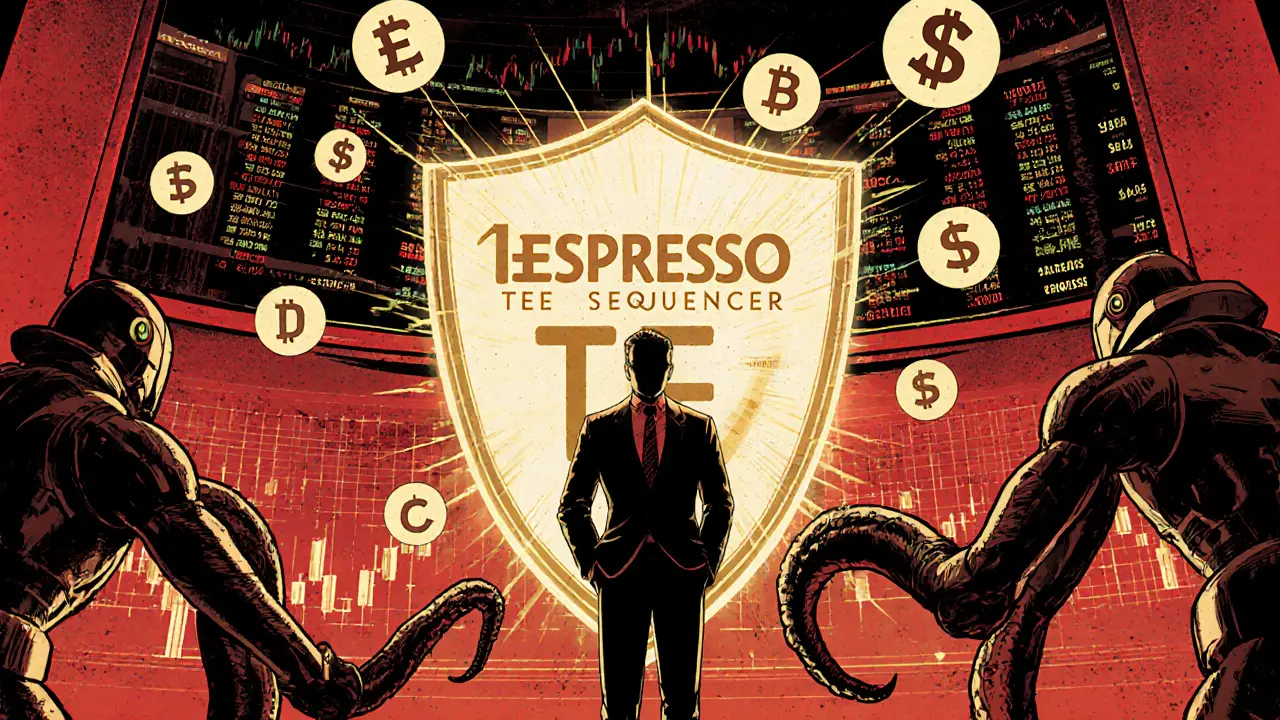
Molten Fee Calculator
See how much you could save on transaction fees by trading on Molten compared to other major Layer 2 and Layer 3 chains. Molten's unique architecture enables fees as low as $0.001 per trade.
Your Trading Parameters
Molten (MOLTEN) isn’t just another cryptocurrency. It’s a specialized blockchain built for traders who want to move fast, pay almost nothing in fees, and avoid getting front-run by bots. Launched in March 2024, it’s one of the first Layer 3 blockchains designed specifically for DeFi trading - not general use. If you’ve ever paid $5 in gas to trade a token that only moved 2%, you already know why Molten exists.
How Molten Works: Built for Speed and Low Costs
Molten runs on top of Arbitrum, which itself sits on Ethereum. This makes it a Layer 3 - meaning it inherits Ethereum’s security but removes the congestion and high fees of the main chain. What sets Molten apart is how it handles data. Instead of storing everything on Ethereum, it uses Celestia for data availability. This is a big deal because Celestia is optimized for cheap, fast data storage, not smart contracts. That means Molten can focus purely on executing trades.Every transaction on Molten costs about 100 times less than on top Layer 2 networks like Optimism or Arbitrum One. That’s not a guess - it’s a hard technical design choice. If a trade on Arbitrum costs $0.10, on Molten it’s around $0.001. For high-frequency traders or those swapping small amounts daily, that adds up fast.
And here’s the kicker: you don’t need ETH to pay gas. Molten uses native account abstraction. That means you can pay fees in USDC, DAI, or even the token you’re buying. No more juggling wallets, no more buying ETH just to trade. It’s one of the smoothest onboarding experiences in DeFi right now.
OEV Protection: Why Traders Care
The biggest pain point for DeFi traders isn’t just high fees - it’s being front-run. Bots watch your transaction, copy it, and slip in front of you to buy the token first, then sell it back at a higher price. This is called Oracle Extractable Value (OEV), and it’s been a hidden tax on retail traders for years.Molten solves this with its Espresso TEE sequencer, added in January 2025. This system ensures that all trades are ordered fairly, without giving any single entity control over the sequence. Protocols on Molten can now call price oracles directly on-chain without fear of manipulation. That means better prices for liquidity providers, lower fees for users, and fewer losses from bot attacks.
Unlike other chains that rely on centralized AWS servers to manage oracles, Molten makes it all decentralized and trustless. This isn’t marketing fluff - it’s a functional upgrade that changes how trading apps are built.
Technical Setup: EVM Compatible and Developer-Friendly
If you’ve deployed a smart contract on Ethereum, Polygon, or Arbitrum, you can drop it onto Molten with zero changes. That’s because Molten is fully EVM-compatible. No new languages, no weird tooling. Developers use the same Solidity code, same Hardhat scripts, same MetaMask setup.The network uses fraud proofs for security - meaning if someone tries to submit a fake state, anyone can challenge it. But there’s a catch: Molten doesn’t have a traditional exit window. That means if something goes wrong, you can’t wait 7 days to withdraw safely like on some other chains. This is a trade-off for speed and low cost. It’s a risk, but one the team believes is manageable given their focus on high-liquidity trading pairs.
Integration with Celestia’s Blobstream gives Molten a strong data layer without bloating the chain. It’s a modular approach that’s becoming the standard for next-gen blockchains. Think of it like outsourcing data storage so the main chain can focus on execution.
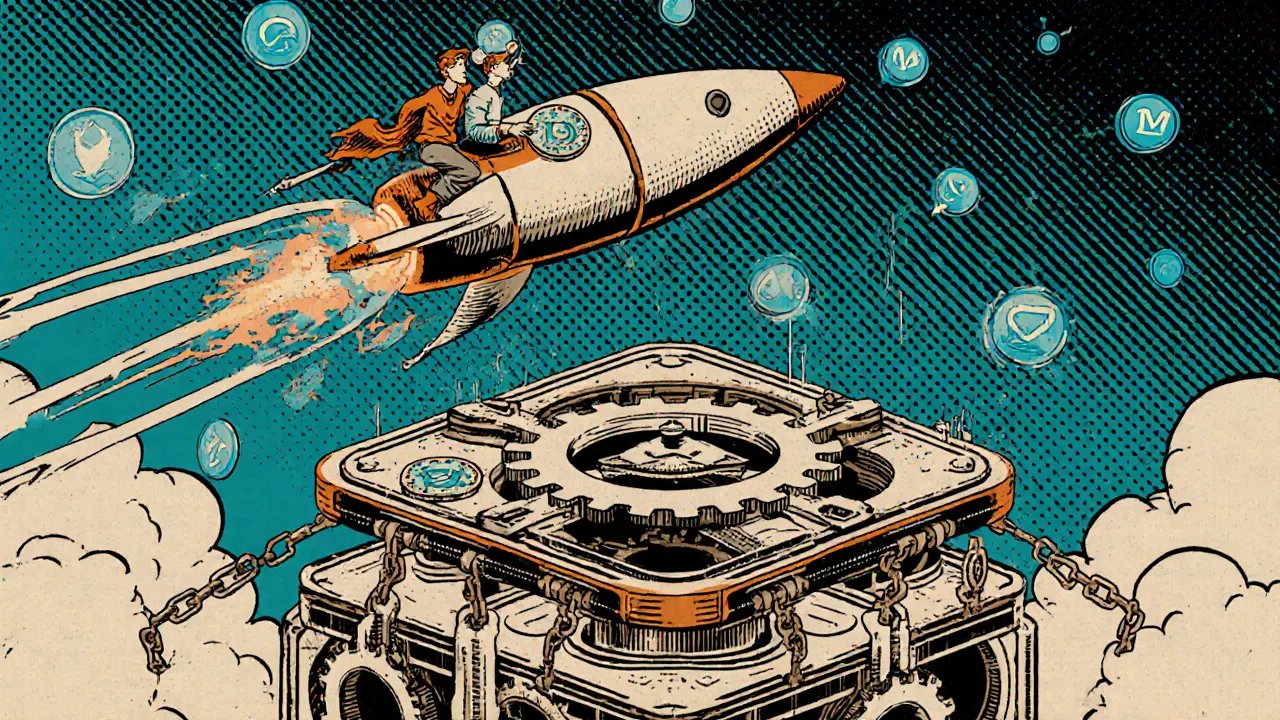
MOLTEN Token: Supply, Price, and Where to Trade
The MOLTEN token is the native currency of the network. It’s used for governance, staking, and potentially future fee discounts. But here’s the confusing part - there’s no clear consensus on supply.CoinGecko lists a total supply of 2.7 million tokens. Liquidity Finder says 4 million exist, but none are in circulation. That discrepancy is a red flag. It suggests either incomplete data or a token distribution that hasn’t been fully unlocked yet.
As of mid-November 2025, MOLTEN trades around $0.30 per token. Over the past week, it jumped over 20%. The 24-hour volume is low - just under $20,000 - which is typical for a new chain. But volume doesn’t tell the whole story. The MOLTEN/WETH pair on Camelot accounts for 42% of all trading, meaning most activity is concentrated in one pair. That’s a sign of early-stage adoption, not maturity.
You can trade MOLTEN on:
- Camelot
- Velodrome Finance v2
- Aerodrome (Base)
- Uniswap V3 (Base)
Most of the liquidity is on Camelot. If you’re trading MOLTEN, make sure you’re using the correct contract address: 0x66e535e8d2ebf13f49f3d49e5c50395a97c137b1. Always double-check - fake tokens are common on new chains.
How Molten Compares to Other Chains
| Feature | Molten (MOLTEN) | Arbitrum One | Optimism | Polygon zkEVM |
|---|---|---|---|---|
| Layer | Layer 3 | Layer 2 | Layer 2 | Layer 2 |
| Gas Fees | ~$0.001 per trade | ~$0.10 | ~$0.12 | ~$0.08 |
| Gas Token | Any token (USDC, DAI, etc.) | ETH only | ETH only | ETH only |
| OEV Protection | Yes, built-in | No | No | No |
| Data Availability | Celestia | Ethereum | Ethereum | ZK proofs |
| TVL (as of Nov 2025) | Under $5M | $4.2B | $1.8B | $1.1B |
Molten doesn’t compete with Arbitrum or Optimism on scale. It competes on specialization. If you’re a trader who cares about speed, cost, and fairness - not just volume - Molten is worth testing. If you’re holding $10,000 in stablecoins and want to move them around safely, stick with Arbitrum. But if you’re doing small, frequent trades? Molten could save you hundreds a month.

Is Molten Safe? The Risks
No new blockchain is risk-free. Molten’s biggest weakness is its lack of decentralization in fraud proving. Right now, only a handful of entities can challenge invalid states. That’s a vulnerability. If those challengers collude with the sequencer, they could approve a fake transaction history. That’s a theoretical risk - no exploit has happened yet - but it’s the main concern flagged by L2BEAT and other analysts.Also, the tokenomics are unclear. With no clear unlock schedule or distribution map, it’s hard to know who holds the majority of tokens. If a single wallet controls 30% of supply, price manipulation is possible.
And while the tech is impressive, adoption is still tiny. The TVL is under $5 million. Compare that to Uniswap’s $1.2 billion on Arbitrum. Molten needs more protocols to build on it - more DEXs, lending platforms, derivatives markets - before it becomes truly useful.
Who Is Molten For?
Molten isn’t for everyone. If you’re just starting out in crypto, don’t rush in. Stick with Ethereum, Polygon, or Arbitrum until you understand how wallets, bridges, and gas work.But if you’re an active DeFi trader - someone who swaps tokens daily, uses leverage, or runs automated strategies - Molten is one of the few chains built with you in mind. It’s the first Layer 3 that doesn’t just say “we’re cheap” - it proves it with real OEV protection and fee flexibility.
Think of it like buying a sports car instead of a sedan. You don’t need it to run errands. But if you’re racing? It’s the only choice.
Where to Learn More
The official docs are at docs.unidex.exchange/appchain/markdown. There’s also a Twitter account (@MoltenL3) for updates. But don’t expect a ton of content yet. The team is focused on building, not posting.For developers: Use MetaMask, connect to the Molten network (add it manually via RPC), and deploy your contract like normal. Everything you know about Ethereum still works.
For traders: Use Camelot or Velodrome. Bridge your USDC or ETH from Arbitrum using the official bridge (found in the docs). Start with small amounts. Watch the price. See how fast your trades execute. Test the OEV protection by placing limit orders and watching if bots jump ahead.
Molten isn’t a get-rich-quick token. It’s a tool. And like any tool, its value depends on how well you use it.
Is Molten (MOLTEN) a good investment?
Molten isn’t a traditional investment like Bitcoin or Ethereum. It’s a high-risk, niche blockchain built for traders. The token price is volatile and based on speculation, not proven adoption. If you believe in the future of application-specific Layer 3 chains and think Molten’s OEV protection will attract major DeFi protocols, then it’s worth a small allocation. But don’t invest more than you can afford to lose.
Can I stake MOLTEN tokens?
As of now, there’s no official staking program for MOLTEN. The token is primarily used for governance and future fee incentives. Any staking offers you see on third-party sites are likely scams. Always check the official docs before interacting with any protocol.
Why is MOLTEN trading so low in volume?
Molten is still very new. Most users haven’t migrated yet. The low volume reflects early-stage adoption, not failure. Many Layer 3 chains start with tiny trading volumes before gaining traction. The key is whether protocols start building on it. If major DEXs or lending platforms join, volume will spike.
Does Molten have a mobile app?
No, Molten doesn’t have a dedicated mobile app. You interact with it through wallets like MetaMask or Rabby, connected to decentralized exchanges like Camelot. Mobile access is possible via browser wallets, but there’s no official app yet.
How do I add Molten to MetaMask?
Go to MetaMask > Settings > Networks > Add Network. Use these details: Network Name: Molten Network, RPC URL: https://rpc.moltennetwork.com, Chain ID: 21111, Symbol: MOLTEN, Block Explorer URL: https://explorer.moltennetwork.com. Save and switch to the network. Then add the MOLTEN token using contract address 0x66e535e8d2ebf13f49f3d49e5c50395a97c137b1.



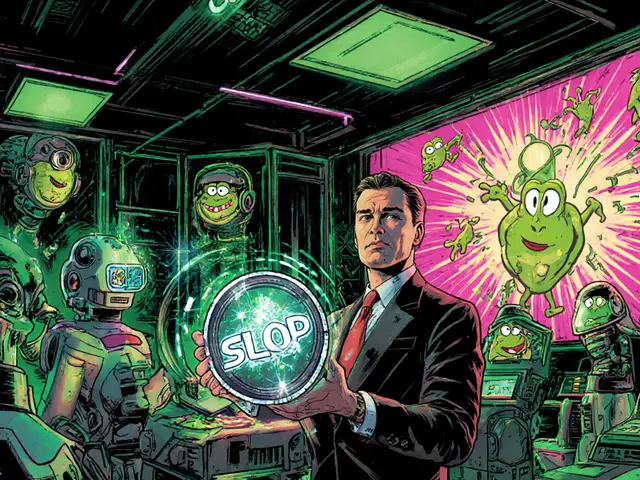
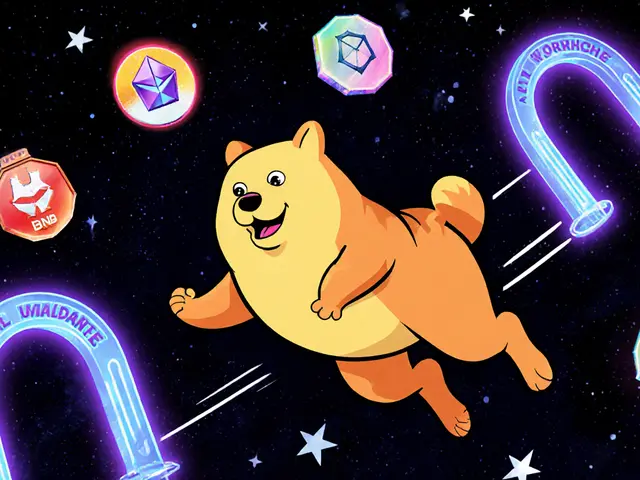
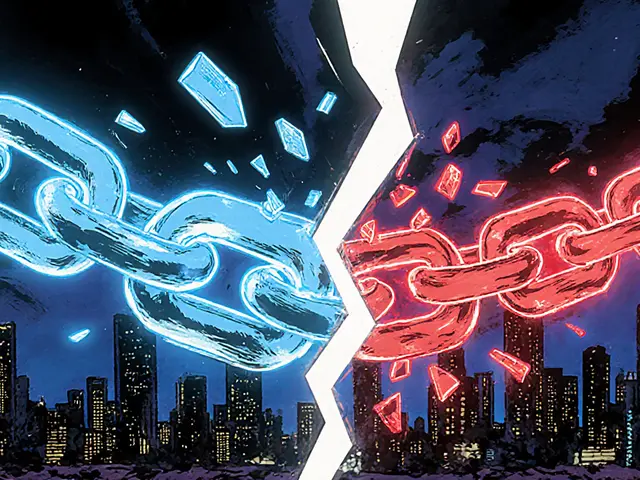
There are 6 Comments
Mike Calwell
lol why do i need another chain when my trades on arbitrum cost like 20 cents? this feels like overkill.
Jay Davies
Actually, the OEV protection via Espresso TEE is legitimately innovative. Most Layer 2s still rely on MEV-Boost or centralized sequencers. Molten’s approach to fair ordering without centralized oracles is a quiet revolution. The data availability layer using Celestia’s blobstream is also architecturally elegant - it’s not just marketing.
That said, the tokenomics are a mess. 2.7M vs 4M supply? No unlock schedule? That’s a red flag for anyone with a risk tolerance below ‘casual gambler’.
And yes, you can pay fees in USDC - that’s huge. No more ETH dependency. But I’d still be wary of the fraud proof system. If only 3 entities can challenge states, that’s not decentralization - it’s a permissioned club with a fancy name.
Also, the fact that they don’t have a traditional exit window? That’s not a trade-off - it’s a liability. If something goes wrong, you’re stuck until someone audits and fixes it. That’s not ‘fast’ - it’s reckless.
But for high-frequency traders? Yeah, this could save you hundreds a month. I’ve seen bots front-run me on Optimism for 0.3 ETH on a $50 trade. That’s not theoretical. It’s daily.
Still, TVL under $5M? That’s not a chain - it’s a demo. I’ll believe it when I see GMX or Aave deploy here.
And don’t get me started on the token contract. Always verify the address. I saw someone lose $800 to a fake MOLTEN token on Uniswap last week. The address in the post is correct, but copy-paste errors kill people.
So yes - technically impressive. Practically? Still a beta.
Grace Craig
One must concede that the architectural ingenuity of Molten constitutes a veritable paradigm shift in the ontology of decentralized finance - a veritable epistemological rupture from the monolithic, gas-guzzling behemoths that have hitherto dominated the Layer 2 landscape.
By decoupling data availability from execution via Celestia’s blobstream architecture, Molten achieves a sublime ontological elegance - a harmonious bifurcation of concerns that echoes the Kantian sublime in computational form.
The Espresso TEE sequencer, a marvel of cryptographic minimalism, obviates the need for extractable value arbitrage by institutional predators - a triumph of justice over entropy.
Yet, the tokenomics remain an abyss of epistemic opacity. The dissonance between CoinGecko’s 2.7 million and Liquidity Finder’s 4 million tokens is not merely a discrepancy - it is a metaphysical crisis of trust.
One cannot help but observe that the absence of a formal staking mechanism, coupled with the complete lack of a distribution roadmap, renders the MOLTEN token less a governance instrument and more a speculative talisman.
The EVM compatibility, while technically laudable, is hardly revolutionary - it is, in fact, the baseline expectation for any serious blockchain launched in 2025.
And yet… one cannot deny the poetic beauty of paying gas in USDC. It is, in its essence, the democratization of financial access - a quiet revolution whispered through smart contracts.
Still, one must ask: when the dust settles, will Molten be remembered as a pioneer… or merely a footnote in the annals of crypto’s endless cycle of overpromising?
Ryan Hansen
I’ve been playing with Molten for about two weeks now - mostly small swaps between USDC and a few memecoins on Camelot - and honestly? It’s weirdly smooth. Like, I didn’t even think about gas once. I just sent a trade, it went through in under two seconds, and I didn’t have to buy ETH or bridge anything extra.
The OEV thing? I tested it. I put in a limit order for a token that was pumping, and I watched it execute exactly when I wanted. No bot jumped ahead. That’s the first time that’s ever happened to me. I thought I was just lucky until I checked the chain explorer and saw my transaction was first in the block.
But yeah, the supply numbers are wild. I went to CoinGecko, then Liquidity Finder, then Dune Analytics, and each one says something different. One says 98% of tokens are locked, another says they’re all minted but not distributed. I don’t know who to trust.
And the fraud proof thing? I asked a dev in their Discord and they said only five addresses can challenge. That’s not decentralization. That’s five guys with admin keys. I get they want speed, but if those five get hacked or go rogue? Game over.
TVL is tiny, but honestly? That’s fine. It’s like asking why there’s no traffic on a new highway. The highway isn’t broken - nobody’s driving on it yet.
I’ve got maybe $500 in it. Not because I think it’ll moon - but because I think it’s the best tool I’ve found for doing 10-15 small trades a day. If you’re doing that, the fee savings add up faster than you think.
Also, the contract address in the post? I double-checked it against the official docs. It’s legit. Don’t trust any other address. I saw a guy lose $1,200 last week because he copied the wrong one from a Reddit comment.
And no, there’s no mobile app. But MetaMask works fine on mobile. Just add the network manually. It’s not hard. I did it on my phone while waiting in line at Starbucks.
I’m not bullish on the token price. But I’m bullish on the tech. It’s like having a Ferrari when everyone else is driving a Prius. You don’t need it - but when you do? You’ll wonder how you ever lived without it.
Derayne Stegall
THIS IS THE FUTURE 🚀🔥 MOLTEN IS ABOUT TO MOON!!!
FEES AT $0.001?? NO ETH NEEDED?? OEV PROTECTION??
YALL JUST GOT A FREE PASS TO TRADE LIKE A PRO!!!
BRIDGE YOUR USDC NOW AND GET IN BEFORE THE CROWD!!!
I’M BUYING MORE TOMORROW 📈💸 #MOLTEN #LAYER3 #DEFI
Astor Digital
As someone who’s been trading on DeFi since 2021, I’ve seen a lot of ‘next-gen’ chains come and go. Molten feels different - not because it’s flashy, but because it’s quiet. No big marketing blitz, no influencers shilling it. Just devs building.
The fact that they’re using Celestia for data availability? That’s a smart move. Most chains still try to do everything on-chain. This one outsources what doesn’t need to be there. Like using a warehouse for storage instead of your living room.
I’m from India, and I’ve been testing this with small swaps on Velodrome. The speed is insane. I used to wait 10-15 seconds for Arbitrum to confirm. Molten? Under 3. No lag. No retrying.
And paying in USDC? That’s huge for people who don’t hold ETH. In places like India, buying ETH just to trade is a pain. This removes that barrier.
Yeah, TVL is low. But that’s because no big protocols are on it yet. Once one major DEX moves over - say, Aerodrome or Balancer - it’ll snowball.
Just don’t throw your life savings at it. This isn’t Bitcoin. It’s a tool. Use it. Don’t worship it.
Write a comment
Your email address will not be published. Required fields are marked *